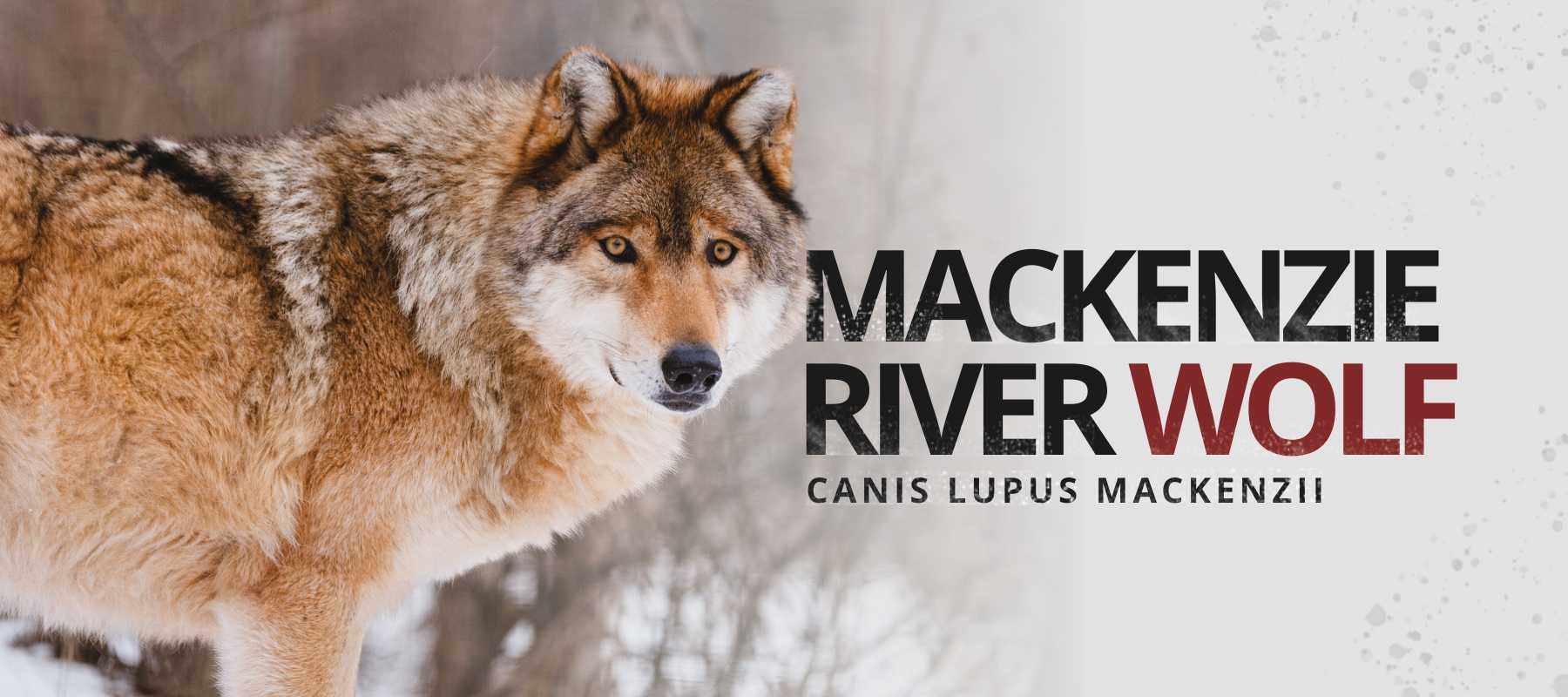CANIS LYCAON
The Eastern wolf (Canis lycaon) is a carnivorous mammal belonging to the canid family. Long considered a subspecies of the gray wolf, genetic testing in 2003 formalized its status as a distinct species.
- Common name: Eastern Wolf
- Scientific name: Canis Lycaon
- Specie: Eastern Wolf
- Type: Mammals
- Diet: Carnivore
- Average size: 5,41 feet
- Weight: 44 to 77 lbs

SPECIES OR SUBSPECIES?
Over the course of history, the scientific community has changed its mind about the classification of the Eastern wolf. The first classifications carried out considered this wolf to be a distinct species. Then, based on morphological studies, it was hypothesized that the Eastern wolf would be a subspecies of the grey wolf and was then referred to as Canis lupus lycaon. Others still consider it to be more of a hybrid, the result of crosses between the gray wolf, the red wolf and the coyote.
Molecular studies carried out in 2003 again suggest that the Eastern wolf is indeed a species in its own right.🧬
EASTERN WOLF DESCRIPTION
The eastern wolf is slightly smaller than the common gray wolf and leaner, giving it the silhouette of a coyote. Its coat is a slightly pale grayish brown and the back and flanks are covered with long black hairs. It has a slightly reddish spot behind the ears, which would suggest an ancestry with the red wolf.

EASTERN WOLF HABITAT
It is difficult to assess the actual populations of Eastern wolves because of their ease of hybridization with coyotes. Once eradicated from the United States, the largest population now survives only in and around Algonquin Provincial Park in Canada.🌲 A few specimens have reportedly been seen in the state of Minnesota and the province of Manitoba, but these may be hybrids.
EASTERN WOLF BEHAVIOR
The Canius Lycaon has a similar behavior to the gray wolf. They live in a family pack on a territory capable of providing them with the necessary amount of food. Their vocalizations and gestures allow them to interact with their fellow wolves, and procreation is only allowed for the alpha male and female. There are also bonds of domination and submission between members of the group.🐺
Like the gray wolf, the Eastern wolf also communicates by secreting odorous substances at the base of its hair, on its legs and on its tail thanks to their scent gland.

EASTERN WOLF BREEDING
The breeding period takes place at the end of winter, and the female gives birth in her den between March and June, after a gestation period of two months. The litters are usually five or six pups that are born blind. They regain their sight after about twelve days.
The young are weaned after two months of breastfeeding. They are then fed regurgitated meat by both parents.
Around 4 months, the cubs have learned the rules of the pack and accompany the adults on the hunt. Sexual maturity occurs after two years on average.
EASTERN WOLF DIET
Smaller than the gray wolf, the eastern wolf feeds mainly on deer and rodents: beavers, muskrats, and birds. It does not prey on large mammals such as elk or moose.🥩
EASTERN WOLF POPULATION AND THREATS
As seen previously, it is difficult to estimate actual eastern wolf populations in the upper Great Lakes because they hybridize easily with coyotes. This fact represents a danger for the preservation of the original strain. The wolf and the coyote are so similar that the Canadian government has instituted a hunting ban for all wolves in Canada, as well as for coyotes to avoid accidental shooting. The canine is also a victim of human pressure: road accidents, agricultural development, mining operations...
Find out more about the species of grey wolves roaming Canada's lands with the Mackenzie River wolf.



